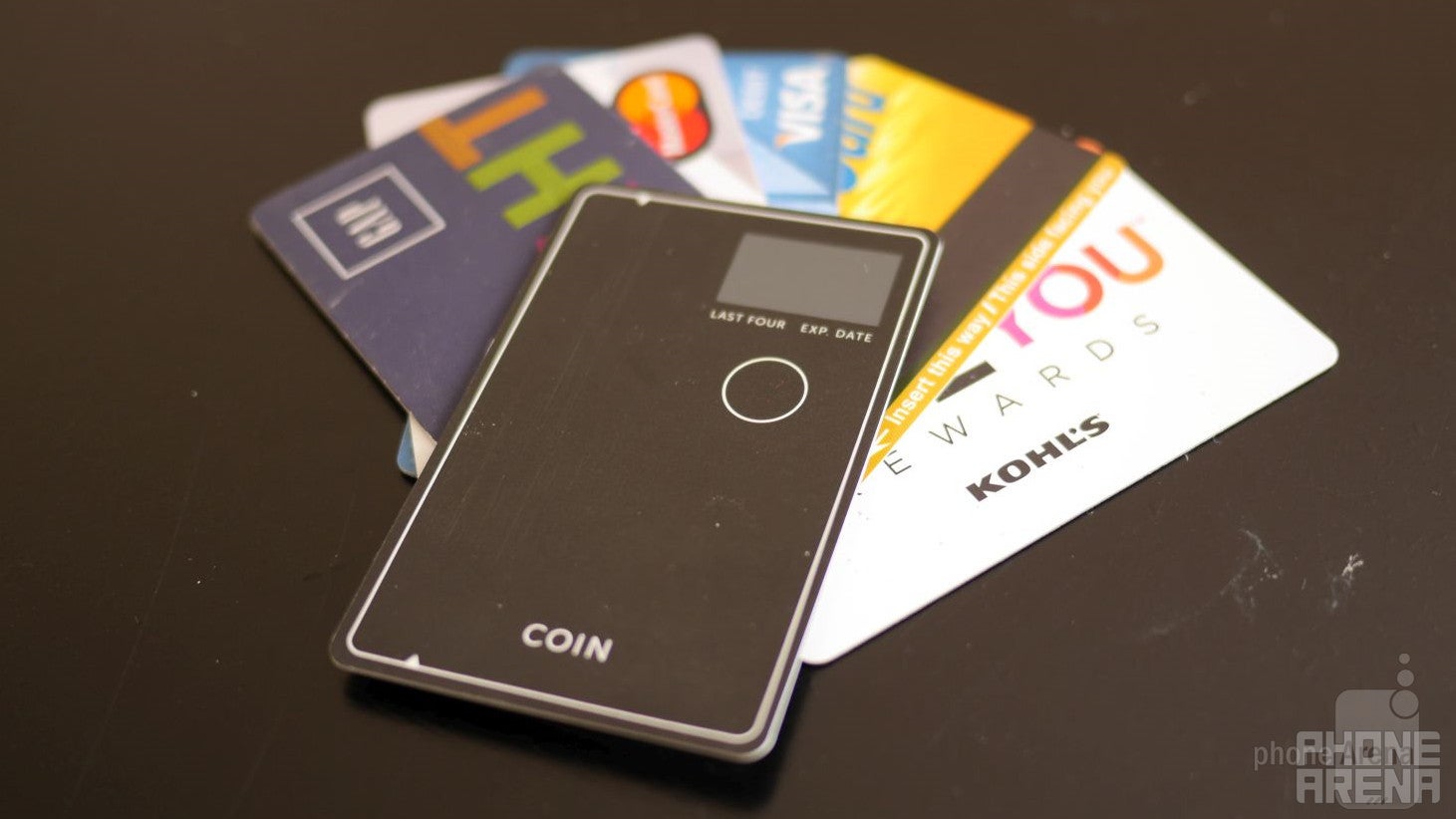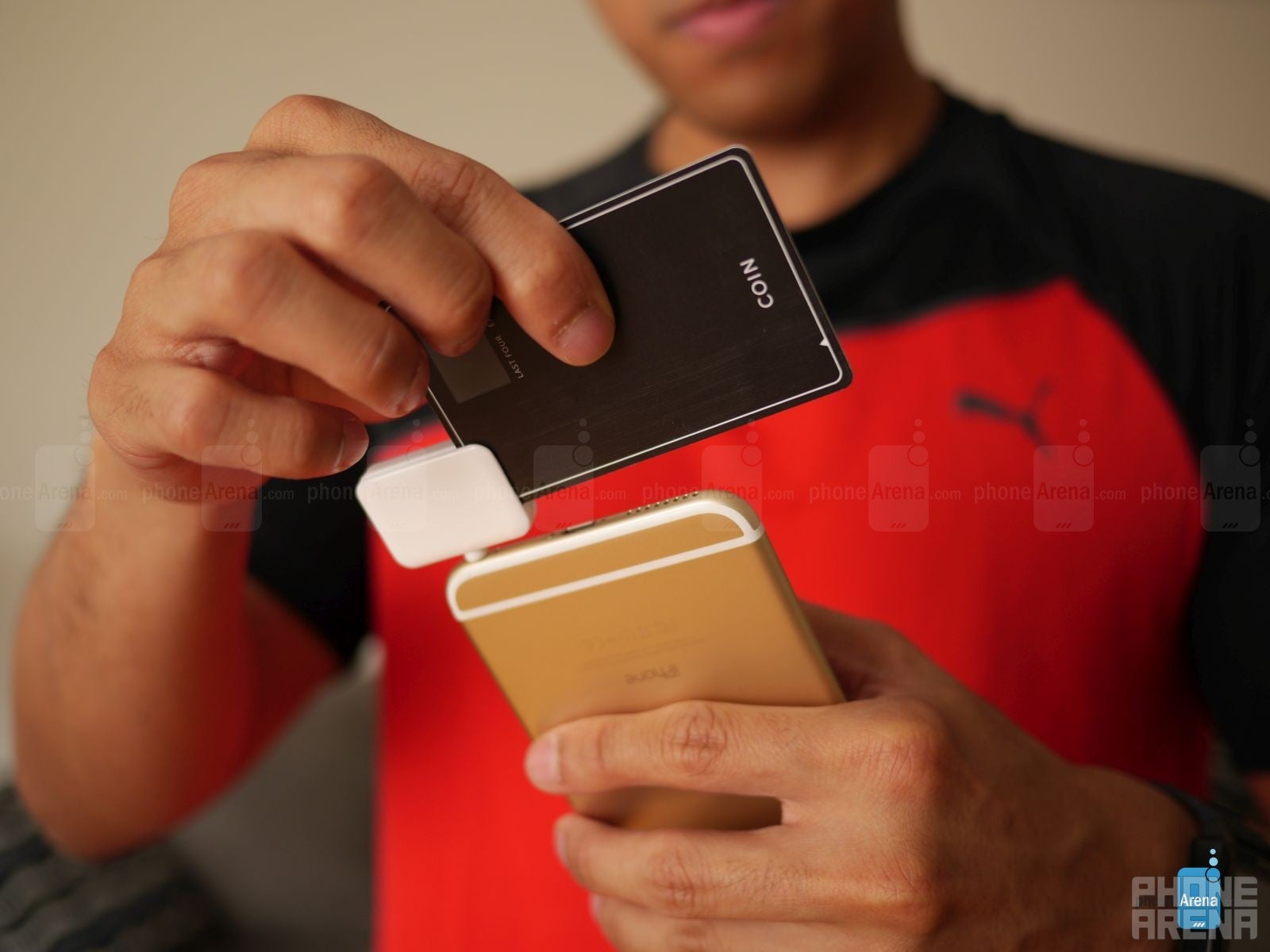Coin Card Review

Introduction
The mobile payments segment has seen considerable attention the last couple of years, exploding to a frenzy where we have numerous options to pick. While Apple Pay seems to be making significant penetration, other services haven’t received the same kind of success, but choice is always a good thing.
Cash is always a preferred form of payment, as well as credit/debit cards, as most merchants and retailers accept them without question. With that in mind, that’s where the idea of the Coin Card was born – the one card to rule them all. Introduced back in November 2013, the Coin Card is a secure, connected device that consolidates all of your credit cards, gift cards, loyalty cards, and much more onto a single card.
Packaging contains:
- Card reader
- Get started guide
The wait was long, almost unbearable
Before we dive into this review, let’s first explain our experience with actually obtaining a Coin Card. When we think about 2013, it’s almost hard to believe that’s when Coin was officially introduced – more so considering we’re at mid-2015. Soon after the startup began accepting pre-orders for Coin, we weren’t hesitant to fork over a $50 pledge to guarantee ourselves a unit, when they became available, of course.
Long story short, we were promised on several occasions that our Coin was finally coming, only to be disappointed on occasion about it being delayed. At long last, Coin finally informed us that they were shipping out our unit this month – a grueling 1.5 years after making that initial pledge. For a time there, we forgot about it and gave up hope on ever seeing it, so needless to say, we were ecstatic to see it at our doorstep.
Design
Coin looks exactly like any other credit/debit card you already have, which is pretty astounding considering that they’re able to stuff all of the electrical components, display, and battery into something that has the same thinness of any ordinary credit card. Add to that, the slick almost all-black front of Coin makes it unique looking amongst credit cards.
On the back, there’s the magnetic strip and signature line – the common layout of every credit/debit card. Meanwhile, there’s a single circular sized button around the front, just a little below the display, that ‘turns on’ Coin.
Plastic in nature, the design is commendable on so many fronts. It doesn’t look like some sort of electronic gadget, which makes it discrete to the point that most merchants don’t even recognize that there’s something different, or special about it – that’s unless they see the display, obviously.
Display
Speaking of the display, it’s a tiny LCD that only displays the name of the card you want to use, the expiration date, and the last 4 digits of the card number. Pressing on the button beneath it allows us to cycle through all the cards stored in Coin. What’s nice, though, about this specific implementation is that the entire card number isn’t displayed – nor is the CVV numbers that’s usually situated in the rear of most credit cards.
Connectivity

Connecting the card reader to the headphone jack of our smartphone, an iPhone 6 Plus in this case, we’re able to store our various cards to Coin.
For added security, Coin locks when it’s not within the Bluetooth range of our smartphone – thus, requiring a tap code to unlock. At the same time, too, if Coin is left behind, a notification is displayed on our smartphone to make us aware of it. And finally, the app also allows us the ability to see the last known location of our Coin.
Coin app
Besides getting Coin set up for the very first time, the Coin app stores all of our cards – where we can then select up to 8 cards that can be stored in Coin. Considering that Coin is meant to work exactly like our existing cards, the app stores their corresponding account numbers and expiration dates. If that’s enough for you, there’s also an option to snap a photo of your cards – both the front and back, which is useful if you need all of that information.
If, for some reason, the card reader isn’t recognizing the pertinent information stored on the card, the app permits us to manually input that information as well.
Performance
Now comes the juicy part about Coin; our experience. No doubt, we were ecstatic about trying it out in the real world – thinking that we can just leave our wallet home. Well, you’ll want to bring just a backup credit/debit card, just because in our experience, Coin’s acceptance is still vastly a hit or miss opportunity. In fact, we feel that its success rate is just minutely positive, to the tune of 60%.
The first place we used it was at a bar, where it worked flawlessly. However, at another restaurant, the POS (Point of sale) system there didn’t want anything to do with Coin, rejecting it totally. Thinking back on it, however, it could also be related to the machine – whether it was making proper contact with the magnetic strip on our Coin, or not. Regardless, it’s always an unpredictable outcome whenever we use it. From the looks of it, though, we notice that newer payment systems that offer both the magnetic swipe and EMV chip technology don’t play nicely with Coin.
One of our credit cards in particular employs an EMV chip, so whenever we swipe its magnetic strip on this newer POS system, it tells us to insert the card so it can read the EMV chip instead. And that’s where it can’t work with Coin. And don’t even bother with those motorized ATM machines that take your card, as opposed to swiping, seeing that they don’t play nicely either in our experience.
Battery
The folks over at Coin claims that the embedded battery will last up to 2 years of usage, which they constitute as swiping Coin upwards around 5 times a day. Seeing that the battery inside of Coin isn’t user replaceable, it means having to shell out the money to buy a replacement, as in a brand new Coin card.
In the short term, there’s obviously no worry about having to recharge or replace it. However, only time will tell on how long the battery really lasts.
Conclusion
Consolidating the amount of things we need to carry and remember on an everyday basis in an inviting idea, giving us less worry about misplacing things and whatnot. Coin is undeniably that kind of new tech toy that we craved the moment it was announced, just because the prospect of combining all of our cards into a single, unified one is intriguing. To that end, Coin serves it purpose in lightening our load –
especially our wallet to be exact.
For all of its charm, we realize that it’s still not a guaranteed thing. In that regard, we’re still carrying just a single card with us, in the event that Coin is rejected because of whatever reason. Still, it’s a cool looking thing that draws attention, especially to the person swiping the card for payment. It’s foreign and the concept is undoubtedly inventive, something that still needs more tuning and work before it can proclaim itself as the one card to rule them all.
Of course, getting one is the first barrier. Once you get it, though, you’ll be enamored by the possibilities. As for pricing, just know that picking one up requires you to drop a good $100 – and probably that same amount in a couple of years when it needs to be replaced, due to battery going. That’s pricey, as most credit card companies automatically send you a replacement at some point. Beyond pricing, its limited availability is still its biggest hurdle, preventing it from reaching that mass appeal amongst consumers. Knowing that there are similar offerings looming, Coin needs to start cranking things up to build up its penetration.

Follow us on Google News












Things that are NOT allowed:
To help keep our community safe and free from spam, we apply temporary limits to newly created accounts: